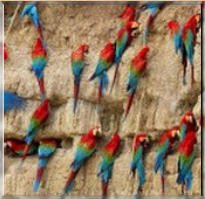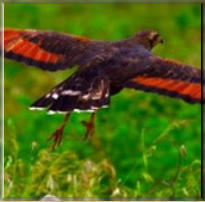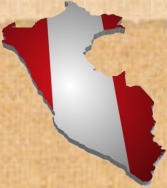
Welcome
Peru’s Travel Website

PERU TOURISM BUREAU
(PTB), is a nongovernment
organization that provides
comprehensive tourism
information and promote
Peru as a leading tourist
destination.
Every place on the planet
has something of interest,
but Perú is undoubtedly a
privileged country for its
great natural, cultural and
human legacy
Useful Links
About Us
PERU TOURISM BUREAU
(PTB), is a nongovernment
organization that provides
comprehensive tourism
information and promote
Peru as a leading tourist
destination.
Every place on the planet
has something of interest,
but Perú is undoubtedly a
privileged country for its
great natural, cultural and
human legacy

BIOGEOGRAPHIC BIRD REGIONS OF PERU
EQUATORIAL PACIFIC COAST
This coastal region of beautiful deciduous
landscapes and warm weather stretches from
the border with Ecuador south to the
department of La Libertad Together with the
southeast of Ecuador this is one of the most
important endemic bird-centers in the world,
called the Tumbesian region, holding 54 range-
restricted bird species. Many of these regional
endemics are also peruvian endemics such as
White-winged Guan, Tumbes Hummingbird,
Coastal Miner, Surf Cinclodes, Piura Chat-
Tyrant, Tumbes Tyrant, Rufous Flycatcher,
Peruvian Plantcutter, and Bay-crowned Brush-
Finch.
PERUVIAN DESERT
Basically no rain a year falls in this extremely
dry region along the Pacific coast, making it
the driest desert in the world together with the
Atacama Desert with which it merges. This
narrow strip of desert runs from Ancash south
through Lima to the border with Chile. Besides
some endemic Miners (Coastal, Common, and
Thick-billed Miner) and some sea birds that
nest in the desert (Peruvian Tern and
Markham's Storm-Petrel), few birds can live
here. However, the desert is crossed by 53
fertile, vegetated valleys with unique set of
birds, some of which are endemic to Peru:
Black-necked Woodpecker, Peruvian Sheartail,
Cactus Canastero, and Slender-billed Finch,
among others.
PACIFIC ANDES
The rather dry or semi-humid mountains on the
western (Pacific) side of the Andes have
dramatic landscapes characterized by extreme
elevational change. Such a complex
topography, of course, has the potential for
population isolation, and consequently several
Peruvian endemics are found in these habitats,
although overall species diversity is modest.
Some of the species found here are Bronze-
Tyrant, White-cheeked Cotinga, Rusty-bellied
Brush-Finch, and Great Inca-Finch, among
others.
SIERRA
Embedded between the eastern and western
slopes of the Andes, this vast territory above
3000 m is dominated by puna grasslands but it
has plenty of other habitats like montane
scrub, wetlands, and Polylepis woodland.
Birding here, so close to heaven, might be
exhausting since you are often above 4000 m,
but generally the birds can be watched from
the roads, or within short walking distance to
patches of forest. Birds that can be seen here
include these Peru endemics: Black-breasted
Hillstar, Dark-winged Miner, White-bellied
Cinclodes, several canasteros, tit-spinetails,
and brush-finches, as well as a number of
Polylepis woodland specialists.
MARAÑON
The upper Marañon Valley is in a rain shadow
and is an island of deciduous forest within the
humid Yungas. It also includes part of the dry
middle Huallaga Valley. This "island" is an
important dispersal barrier to many species of
humid areas, adding to the complexity and
richness of the region, another of the most
important endemic bird areas in the world.
Endemics to this area are Peruvian Pigeon,
Yellow-faced Parrotlet, Purple-backed
Sunbeam, Marvelous Spatuletail, Marañon
Crescent-chest, four species of Inca-Finches,
and several other species.
YUNGAS
This region on the eastern slope of the Andes
not only gets great amounts of rain, it also
captures humidity that evaporates from all over
the Amazon Basin. The Yungas forest, also
known as mist or cloud forest, harbor the
highest point diversity of birds of any region in
the world. Birds inhabiting this region include
the Peruvian endemics: Cloud-forest Screech-
Owl, Long-whiskered Owlet, Yellow-browed
Toucanet, Scarlet-banded Barbet, Speckle-
chested Piculet, Pale-billed Antpitta, Peruvian
Wren and Golden-backed Mountain-Tanager
and Rufous-browed Hemispingus.
TROPICAL AMAZONIA NORTH OF THE
AMAZON
The Amazonian lowlands of Peru are part of
the vast Amazon basin, a region whose
uniform green appearance conceals a complex
and diverse pattern of lowland forest types,
including white-sand forests, varzea, and river-
edge forest. This highly diverse area has few
Peruvian endemics (Allpahuayo Antbird, Black-
headed Antbird, new species of Gnatcatcher)
but lots of regional endemics such as Brown
Jacamar, Brown-backed Antwren, Black-
chinned Antbird, White-masked Antbird,
Spotted Antpitta, Helmeted Pygmy-Tyrant,
Golden-winged Tody-Flycatcher, Cinnamon-
crested Spadebill, Great Crested Flycatcher,
Pompadour Cotinga, Orange-throated Tanager,
Bicolored Conebill and Ecuadorian Cacique.
TROPICAL AMAZONIA SOUTH OF THE
AMAZON
This region encompasses the eastern lowlands
south of the Amazon river, which is an
important distributional barrier, including most
of the department of Ucayali and most of the
lowlands of the department of Junin. Another
region of vast forests, with habitats similar to
those found north of the Amazon. Peruvian
endemics and other specialties in this region
include: Blue-cheeked Jacamar, Rusty-backed
Spinetail, Saturnine Antshrike, Amazonian
Black-Tyrant, Three-striped Flycatcher, Purple-
breasted Cotinga, Gray-chested Greenlet,
Black-bellied Tanager, Dotted Tanager and Sira
Tanager.
SUBTROPICAL AMAZONIA
The eastern lowlands in the departments of
Madre de Dios, lowlands of the department of
Cuzco and southern part of the departments of
Ucayaliand lowlands of Junin are part of
Subtropical Amazonia, a region of lowland and
lower montane forests with a marked
seasonality. Noted for extremely high diversity
of species and large percentage of protected
surface, some of the specialties of this region
are: Fine-barred Piculet, Peruvian Recurvebill,
Bamboo Antshrike, Ihering's Antwren, Rufous-
fronted Antthrush, Slaty Gnateater, Long-
crested Pygmy-Tyrant, White-cheeked Tody-
Tyrant, Spectacled Tyrant, Gray Monjita, Black-
faced Cotinga, Flame-crowned Manakin,
Black-masked Finch and Selva Cacique.
THE OCEAN
The Pacific Ocean off the Peruvian coast is the
richest tropical ocean in the world thanks to the
cold Humboldt Currents that produce the
nutrient-rich upwelling on which all marine life
is based. The edge of the Continental Shelf is
relatively close, which makes pelagic birding
possible not that far from the coast. Typical
coastal species are Peruvian Tern, Inca Tern,
Nazca Booby, Red-legged Cormorant,
Markham's Storm-Petrel, Surf Cinclodes and
some pelagic birds are Waved Albatross,
Peruvian Diving-Petrel, and Ringed Storm-
Petrel.














































